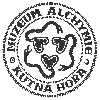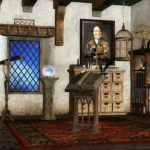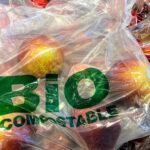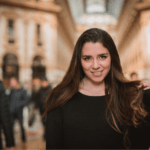Kutna Hora lies approximately 65 kms due E of Prague and can be accessed easily by car, bus or train.Acknowledged as one of the most beautiful and historic towns in the Czech Lands, Kutna Hora has, since 1995, been listed and protected by UNESCO as a World Heritage Site.
Its tremendous wealth and historical importance were derived from silver-mining and Minting. In the 14th Century it had perhaps the richest silver-mine in Europe and rivalled Prague in importance and population. As silver was discovered in S. America the importance of Kutna Hora dwindled and the silver was depleted; further exploitation became uneconomical, though one mine continued in production till a decade ago.
Since the early 18th Century Kutna Hora has been a sleepy backwater, with a current population of 23,000 people, but the abundance of monuments, including the outstanding St. Barbora’s Cathedral (the patron saint of miners), the Italian Court, formerly both a Mint and a Royal Palace and the eerie Bone Church, where the bones of 40,000 vicims of the 30 years war and the Black Death have been converted into ornaments, attract many visitors.
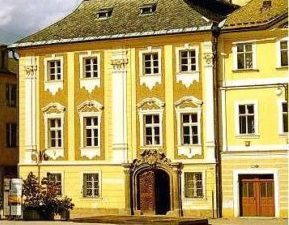
Most interestingly, in the splendid Sankturinovsky House [photo above], on the Main Square, Palackeho namesti,was allegedly located the alchemy laboratory of Hynek Minsterbersky (1452-1492), son of King George of Podebrady (1420-1471),while in the adjacent tower is Hynek’s former chapel or alchemical oratory. The City of Kutna Hora decided in February 2001, after an almost three-year negotiation, to support the creation of an Alchemy Museum in the Sankturinovsky House. The photo below shows the unique late-Gothic ceiling in the tower-room of Hynek’s Chapel.
Rene Alleau, the veteran French Alchemist described this ceiling as depicting the Magnum Opus; it certainly transforms all who see it…
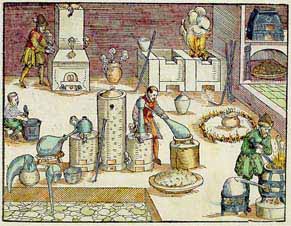
Translation of article and manuscript will be available soon here.
This is an extremely exciting discovery for all members of the Alchemical Community here,especially for those involved in the Alchemy Museum Project. It is also of wider interest to historians and to the public to whom Hynek is also well known as a poet, writer of a famous erotic verse called ‚May‘.
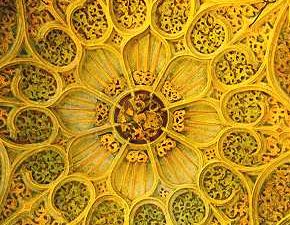
It has also attracted a great deal of support locally, nationally and internationally and in 1999 a large collection of reproduction Alchemical Glass and ceramics was donated for the Museum by the Kavalier Company of Sazava.
In January of 2001 a Civic Association was formed,the Alchemy Museum in Kutna Hora, with Michal Pober as President to fundraise for and to organise the museum. We are seeking support and donations for the Museum at all levels and also a not-for-profit Organisation which can accept tax-deductible funds on our behalf in the United States. The proceeds of our Magical Journeys and other events also help to finance the Museum.
Full details of the project will be available shortly on this site.
